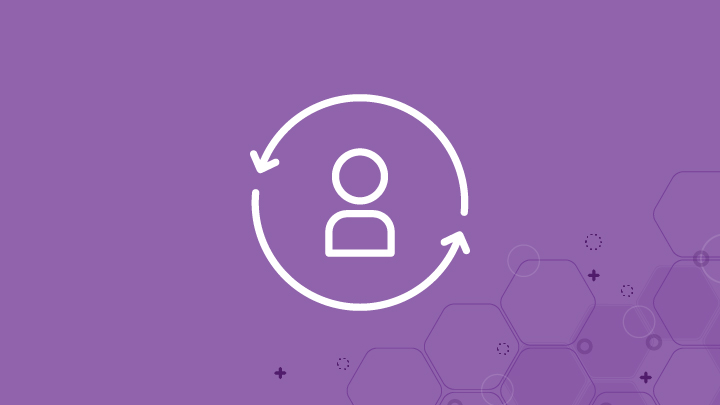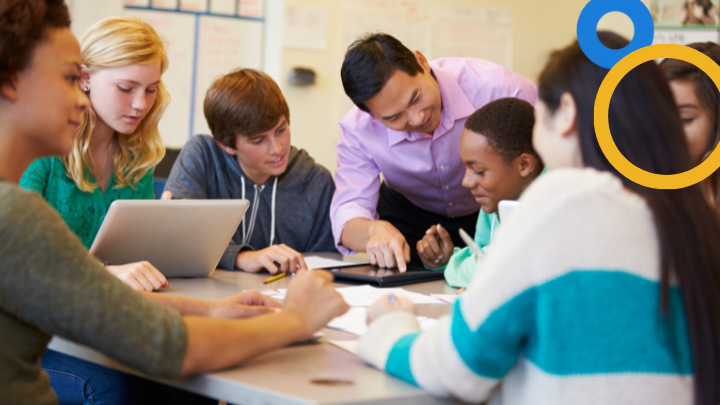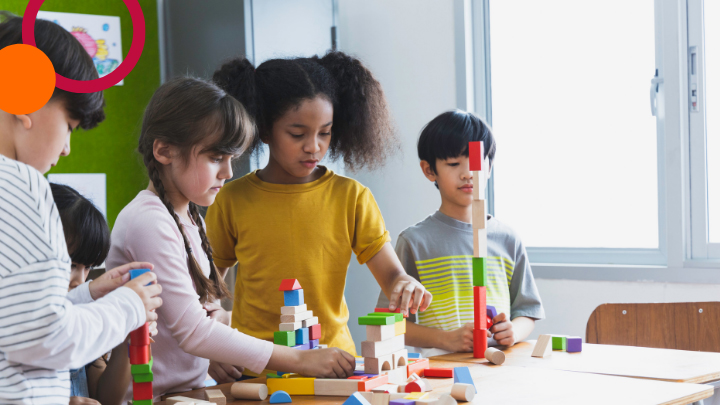As teachers we often find ourselves most frequently using teaching strategies that make us feel comfortable. But what if what we like best doesn’t work for all of our students? And what about students who don’t learn the skills or content the first time?
These reflections have led me to dedicate time and space in my curriculum for re-teaching and re-learning concepts. I refuse to let students “not getting it the first time” be the end of the road anymore. It has become the beginning of a process during which my students and I transform mistakes into learning opportunities.
Here are five strategies my BetterLesson coach, Jessica Anderson, and I focused on in order to re-teach content that have helped my students learn, stay engaged, and dramatically improve their mastery of skills, concepts, and content.
Conference with students about data and share data with families.
Before beginning the re-teach process, I believe it is important to conference one-on-one with each student to review and analyze their most recent assessment results. When I conference with my students individually, we review the questions that they answered incorrectly, and those questions become their playlist for re-teach activities. In addition to reviewing the data, we set goals together for what the student wants to achieve using BetterLesson’s Data Review and Goal Setting Conferences strategy. In this way, students better understand what they need to do in order to improve, and it gives them hope and perspective for moving forward. I have found that these one-on-one data review and goal setting conversations are the difference between students throwing their re-teach packet in the bottom of their bag because “they failed, and they will always fail” and putting it neatly in their folder because “they failed, but they have a plan to pass.”
For those students who did not perform well on the assessment, I give them a data letter to bring home and review with their family. This helps both the family members and the student understand where they are, where they need to be, and how they can get there with a personalized re-teach plan. The process of creating personalized data letters may sound time consuming, but if you stick to a template it’s actually rather fast work: I can complete about 60 in two hours.
Create playlists to focus on what students actually need to work on.
When I first started focusing on re-teaching I made packets of work for each student to complete that aligned to an entire standard. I soon realized, however, that I was wasting time by having my students complete large packets about every topic when they may have only needed to do additional work one concept in that packet. Instead, I now plan ahead by creating quick activities and scaffolded re-teach questions before I even give my students the unit assessment. In developing these activities and questions, think about all the misconceptions my students may have and build an assignment for each of those misconceptions.
After my students take the unit assessment, their test score sheets become their playlists—individualized pathways to master concepts. I have found that student buy-in and work completion is much higher because they only have to work on the questions that they missed. After students work through their individualized playlist, I use BetterLesson’s Micro-grouping to Provide Feedback strategy in order to conference with them in groups to provide feedback and clarify their misconceptions and use the following three strategies to bolster their understanding of the information.
Make re-teaching relevant.
When my students didn’t understand my writing prompt question the other day, I knew I had to find a different way to explain why there can’t there be a food chain without a producer. They were not making the connection that plants must transform the sun’s energy or it is useless to the consumers and decomposers.
I asked, “Who has been out of the country?”
Most of my students raised their hand, as I teach at a school with a large population of immigrant families.
“What happens when you come to America with money from other countries? Can you use it here?” I asked.
“No, you have to exchange it,” one of my students said.
I compared the process of exchanging money with how plants need to “exchange” the sun’s energy and… Bingo! They got it!
They were capable of understanding the concept; I just had not provided them with information they could latch onto and expand. Money and sun’s energy, on the surface, have nothing in common. But in this instance it was the perfect segue.
Make re-teaching memorable.
After most units, we have a themed re-teach party during which we celebrate our accomplishments and review the concepts that we still need to work on. I have found that these parties serve to bolster understanding and elicit insight into the content. For example, during a recent Heat Transfer S’mores party, one of my students realized that the hot plate we had set up in the sun was cooking the marshmallows faster than the one in the shade. I was about to ask her why when she yelled, “And it’s because it has heat radiating from the stove and the sun on both sides!” She was so excited to share this information.
Activities like these amp up student engagement and eagerness to learn. Students ask and answer questions of each other, think through misconceptions, and have a memorable experience.
It has been proven that the more emotional the memory, the higher priority it has to be remembered. We are competing for emotional importance every day that we teach. If I can elicit excitement and happiness from my students, I’m also excited because I know my lesson is more powerful and will be better retained by them.
Get moving.
Most students have no problem learning the newest dance or remembering the lyrics to the latest song. The brain creates new pathways to the hippocampus, where memories are stored, increasing the likelihood the students will remember the information. So, I asked myself, “Could I use dance and music to re-teach?”
Although it pushed me out of my comfort zone, I quickly realized that the answer to my question was a resounding, “Yes!”
In the last few years, I have focused on kinesthetic instruction and have incorporated more dance and music into my classroom than ever before. My students and I rap, dance, and even jump on chairs, but we don’t do these things just because it is fun (and it is!), we do them because they are great ways to demonstrate understanding of information and re-learn concepts in different, engaging ways.
In Part Two of this blog series, I’ll share some strategies to help students buy into the process of re-learning and what teachers can do to review concepts and skills at the end of the year.







